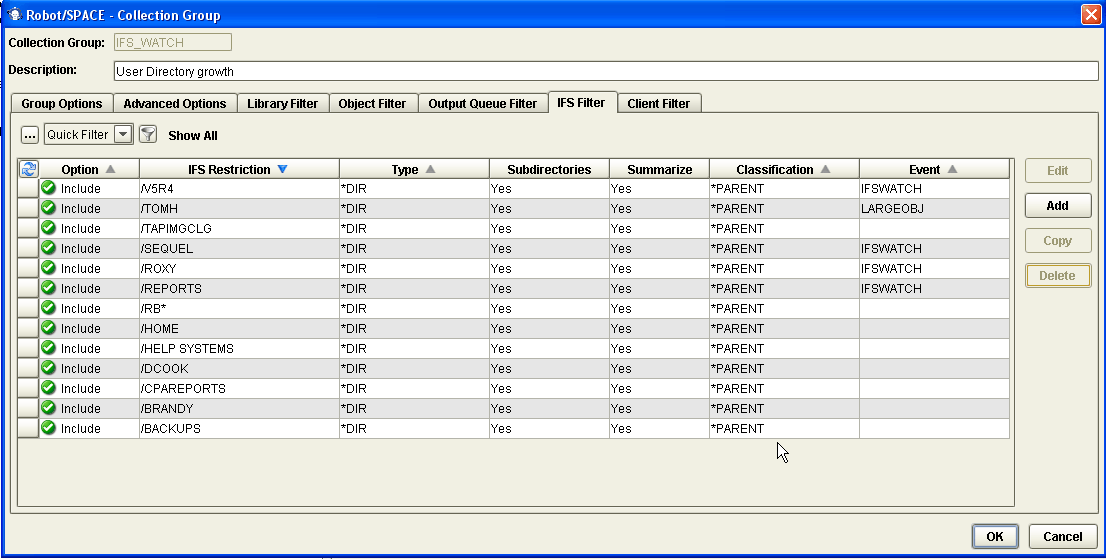How do you monitor the IFS and temporary storage growth?
You know the all-too-familiar cry from your staff: "Where did the disk space go? Who is responsible for consuming the entire disk?" As a good administrator, you rerun the reports from the past weekend, but you can't find the reason. The library disk reports show that the disk space is the same, yet your WRKSYSSTS disk space percentage is at 92 percent. The culprit may be IFS growth or temporary storage consumption.
Many of the tools we typically use to track disk space on your IBM i server look only at overall disk space consumption or at space used by libraries. However, disk space consumption on this platform has changed considerably. IBM continues to put more and more applications into IBM i directories. Every time you install IBM software such as Domino, WebSphere, and IBM i Access, remnants are left over in the IFS. And, if you use SAP or Oracle EnterpriseOne, they also store data in the IFS. Plus, any product that converts spooled files to PDF puts the PDF conversions in the IFS.
What about temporary storage consumption? Typically, communication jobs, Java applications, and query processes consume temporary storage. Every IBM i job consumes some amount of temporary storage. Every once in a while, one of these jobs consumes inexplicable amounts of disk space.
In the past, your system administration team probably wrote programs that use APIs to automate monitoring the IFS and temporary storage. The reality is that many teams are now overloaded and no longer have time to write their own programs. So they resort to guessing at the IFS and temporary storage consumption.
There's a better way to monitor IFS and temporary storage growth—Robot/SPACE. Robot/SPACE has an easy-to-use graphical interface that lets you open all your directories and shows you which jobs are consuming temporary storage. You can view actual directory sizes and establish rules defining which directories you want to see. You can compare different collections to see what's changed and report on directory growth (Figure 1). Then, you can specify an action to take if the directory exceeds the defined threshold level, based on the growth percentage or the size of the directory.
Figure 1: Robot/SPACE collections reveal your directories. (Click images to enlarge.)
Robot/SPACE Collection Groups let you specify directories and group them so you can report on who is responsible (Figure 2). They also warn you about excessive growth. Robot/SPACE even has a cleanup routine for purging old IFS objects from the system.
Figure 2: Define rules for collecting IFS directories.
What Jobs Are Consuming Temporary Storage?
Not only can Robot/SPACE show you which jobs are consuming temporary storage, it can set warnings for jobs that consume more than a certain amount. Robot/SPACE is all about automation; it can warn you automatically the moment a job exceeds a threshold.
Figure 3 shows a Robot/SPACE window you can sort by temporary storage consumption and by job. It takes only a few seconds for Robot/SPACE to load this window with the current readings from your system.
Figure 3: Robot/SPACE displays current temporary storage consumption numbers.
Robot/SPACE helps you monitor, manage, and maintain the IFS and your temporary storage—automatically. Give it a FREE 30-day trial.
system administration,
as/400, os/400, iseries, system i, i5/os, ibm i, power systems, 6.1, 7.1, V7,















 Business users want new applications now. Market and regulatory pressures require faster application updates and delivery into production. Your IBM i developers may be approaching retirement, and you see no sure way to fill their positions with experienced developers. In addition, you may be caught between maintaining your existing applications and the uncertainty of moving to something new.
Business users want new applications now. Market and regulatory pressures require faster application updates and delivery into production. Your IBM i developers may be approaching retirement, and you see no sure way to fill their positions with experienced developers. In addition, you may be caught between maintaining your existing applications and the uncertainty of moving to something new. IT managers hoping to find new IBM i talent are discovering that the pool of experienced RPG programmers and operators or administrators with intimate knowledge of the operating system and the applications that run on it is small. This begs the question: How will you manage the platform that supports such a big part of your business? This guide offers strategies and software suggestions to help you plan IT staffing and resources and smooth the transition after your AS/400 talent retires. Read on to learn:
IT managers hoping to find new IBM i talent are discovering that the pool of experienced RPG programmers and operators or administrators with intimate knowledge of the operating system and the applications that run on it is small. This begs the question: How will you manage the platform that supports such a big part of your business? This guide offers strategies and software suggestions to help you plan IT staffing and resources and smooth the transition after your AS/400 talent retires. Read on to learn:
LATEST COMMENTS
MC Press Online